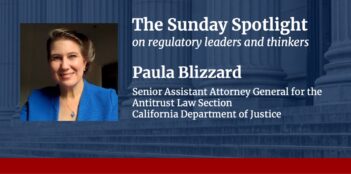
California was more effective than the federal government at preventing foreclosures during the Great Recession.
Over 75 percent of all U.S. homebuyers use a mortgage. But during the Great Recession, nearly 4 million homeowners every year failed to make their monthly mortgage payments on time. If a borrower misses a series of mortgage payments, the lender has the right to initiate foreclosure by repossessing the home and evicting the homeowner.
In a recent paper, several researchers argue that California’s response to the foreclosure crisis during the Great Recession was more effective at reducing foreclosures and stabilizing housing prices than was the federal government’s approach. They also claim that California’s approach yielded a larger positive economic impact than the Obama Administration’s main foreclosure preventing program—known as the Home Affordable Modification Program (HAMP). Moreover, the effects of California’s response appear to have been long lasting, creating $300 billion in housing wealth and reducing foreclosures by 16 percent, thereby preventing 380,000 homeowners from losing their homes, according to the new paper by researchers Stuart Gabriel, Matteo Iacoviello, and Chandler Lutz.
California’s foreclosure policy responded to a dramatic decline in property values that occurred during the Great Recession. Home values in the state fell by 30 percent, and between 500,000 and 800,000 homes entered foreclosure.
To “help even more Californians keep the American Dream of homeownership alive,” California Governor Arnold Schwarzenegger signed SB-1137 in 2008, the first of two major initiatives known collectively as the California Foreclosure Prevention Laws. The federal government would not unveil HAMP for almost another year.
SB-1137 prohibited lenders from issuing a Notice of Default, the first step in the foreclosure process, for 30 days after first contacting the borrower with options to avoid foreclosure. Lenders were required to make three attempts at contacting the borrower at different times of the day and on different days to satisfy the law’s due diligence requirements.
The law also imposed a significant $1,000 per day fine on vacant homes acquired through foreclosure if the legal owner failed to maintain the property.
By making foreclosures more costly for lenders to pursue, the legislature intended to make it more attractive for lenders to give borrowers relief and modify their loan terms, according to the Gabriel, Iacoiello, and Lutz study.
California strengthened its foreclosure regulations by adopting the California Foreclosure Prevention Act, in 2009. This law expanded on SB-1137 by further increasing the length of the foreclosure process by mandating an additional 90 days between the Notice of Default and the Notice of Sale unless the lender agreed to implement a comprehensive loan modification program to achieve “long-term sustainability” for the homeowner.
The Obama Administration, however, took an alternative approach to address the foreclosure crisis.
Instead of following California’s lead and modifying the foreclosure process itself, in 2009, the federal government attempted to reduce foreclosures by providing financial incentives for lenders to modify mortgages for at-risk homeowners. This program, however, was entirely voluntary and allowed lenders, not homeowners, to control the entire loan modification process.
Unlike the California laws, critics have accused the federal program of seriously underperforming expectations.
Before the program’s unveiling, President Barack Obama proclaimed that HAMP would “enable as many as 3 to 4 million homeowners to modify the terms of their mortgages to avoid foreclosure.” The Special Inspector General for the Troubled Asset Relief Program, however, admitted in her quarterly report to Congress in 2016 that HAMP had “fallen short of helping the 3 to 4 million homeowners envisioned for the program” and that lenders’ “misconduct in the program had been the subject of homeowner complaints and Inspector General enforcement actions.”
By participating in the federal government’s program, the California laws exempted lenders from the new regulations. Gabriel, Iacoviello, and Lutz, however, found that only slightly more than a quarter of all the California exemptions were obtained through HAMP, indicating that the vast majority of lenders were not participating in the federal program. Therefore, Gabriel, Iacoviello, and Lutz assert, the California laws were able to provide relief for homeowners whose mortgages were unaffected by the federal government’s efforts.
Gabriel, Iacoviello, and Lutz contend that, unlike HAMP, the California laws were effective in creating a regulatory framework that “increased the cost and duration of the foreclosure process” to “encourage widespread modification of California mortgages.” Additionally, unlike HAMP, the state laws did not require expenditures from the California budget.
The California laws, which were only in effect from 2008 to 2011, prevented a reported 380,000 foreclosures with no expenditures from the California budget. Since 2009 and after spending $12.9 billion, HAMP helped only a reported 1.6 million borrowers across the entire country out of the original 3 to 4 million borrower projection. Moreover, despite refinancing their mortgages to more favorable terms, one-third of those participating in HAMP eventually defaulted again. An additional 4 million U.S. mortgage-holders failed to receive relief from the federal government after they applied for a HAMP mortgage modification but were denied.
By preventing 380,000 foreclosures, Gabriel, Iacoviello, and Lutz calculate the California laws generated an estimated $300 billion in housing wealth.
Foreclosures can decrease housing prices in two ways. First, the mere presence of a foreclosed home may diminish the desirability of a neighborhood, lowering property values en masse. Second, since foreclosed-upon borrowers have a difficult time reacquiring a mortgage for several years, a foreclosure increases the supply of houses on the market without increasing the potential pool of buyers. Gabriel, Iacoviello, and Lutz claim that by preventing a foreclosure, the California laws prevented a domino effect on falling housing prices and allowed the California housing market to rebound at a faster rate than that of the rest of the nation.
These California laws, therefore, may provide an attractive model for other states when faced a with similar crisis.
Gabriel, Iacoviello, and Lutz estimate that because of the similarities in the pre-recession housing markets, had Nevada and Arizona implemented policies akin to that of California, 105,000 additional homes would have avoided foreclosure and the resultant increase in house prices would have created $40 billion of housing wealth.
The Gabriel, Iacoviello, and Lutz study was released earlier this year as a working paper by the Anderson School of Management at the University of California, Los Angeles, where Gabriel serves on the faculty.



